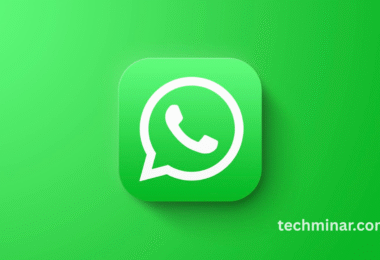Turning off Voicemail on Android is a common question among users who prefer not to deal with voice messages. Whether it’s to avoid carrier charges, reduce distractions, or simply because Voicemail isn’t useful to you, there are multiple methods available for disabling it, depending on your Android device and network provider.
In this complete guide, we’ll walk you through several approaches, ranging from adjusting call settings to contacting your carrier to permanently or temporarily disable Voicemail. Each method is designed to be beginner-friendly and works on most Android devices. Let’s get started with the most effective ways to turn off Voicemail today.
Disable Voicemail by Calling Your Carrier Support
The most reliable method to turn off Voicemail on Android is by directly contacting your mobile service provider. Each carrier has specific protocols, and in many cases, only they have the ability to fully disable Voicemail at the account level.
Steps:
- Call your carrier’s customer support (e.g., Verizon, T-Mobile, AT&T).
- Request voicemail deactivation.
- Confirm the changes have been applied.
This method ensures that all voicemail-related features are disabled across devices and SIM cards.
Use Carrier-Specific Codes to Deactivate Voicemail
Some carriers allow users to disable Voicemail by dialing specific MMI or USSD codes. These codes vary by region and provider.
Read More : Save TikTok Videos in Bulk – A Complete Guide for You
Examples:
- Verizon: Dial *73 to deactivate call forwarding.
- AT&T: Dial ##004# and press call.
- T-Mobile: Dial ##004# or use the app.
Before using these, check with your carrier’s official site or support to avoid conflicts with other services.
Turn Off Call Forwarding in Phone Settings
Voicemail often works through call forwarding. By disabling call forwarding, you can effectively prevent calls from being sent to your Voicemail.
To do this:
- Open the Phone app.
- Tap the three-dot menu > Settings.
- Select “Calls” or “Call forwarding.”
Disable all forwarding options: “Always forward,” “Forward when busy,” etc.
This method works on most stock and customized Android versions.
Use the Voicemail Settings Menu in the Phone App
In some Android devices, especially those with carrier-customized firmware, the voicemail settings are found directly in the Phone app.
To access:
- Open the Phone app.
- Tap the menu > Settings > Voicemail.
- Disable the voicemail service or change the number to a non-existent one (e.g., 00000).
Note: Effectiveness depends on your carrier allowing manual override.
Deactivate Voicemail via Carrier Mobile App
Most carriers offer official apps (e.g., My Verizon, T-Mobile, MyAT&T) where voicemail features can be managed.
Steps:
- Install your carrier’s app from Google Play.
- Log in with your account credentials.
- Navigate to “Voicemail Settings.”
- Turn off Voicemail or disable call forwarding to Voicemail.
- This method is ideal for users who prefer a visual interface over dialing codes.
Disable Visual Voicemail Apps or Notifications
If your phone uses visual Voicemail (especially Samsung, Google Pixel, or Motorola), you can disable or uninstall the feature without affecting basic calling.
Steps:
- Go to Settings > Apps.
- Locate the Visual Voicemail app.
- Tap “Disable” or “Uninstall.”
You may also disable voicemail notifications in Settings > Notifications.
This prevents the phone from downloading or displaying voice messages.
Use a Third-Party App to Block Voicemail Access
Some third-party apps (like YouMail, Call Control, or Voicemail Blocker) can intercept or reroute calls that would normally go to Voicemail.
Pros:
- Extra control over blocked numbers.
- Manage voicemail behavior externally.
- Prevents Voicemail even without carrier support.
Cons:
- It may require background permissions.
- It is not guaranteed to work across all Android versions or networks.
- Set a Blank or Confusing Voicemail Greetin
If disabling Voicemail entirely isn’t an option, a workaround is to set a greeting that discourages callers from leaving messages.
To do this:
- Call your Voicemail.
- Access the greeting menu.
- Record a message like: “Voicemail is not available. Please text me.”
- This won’t block Voicemail, but it deters people from using it.
Frequently Asked Questions
How do I know if the Voicemail is turned off?
You’ll no longer receive voicemail notifications, and calls will not be diverted to Voicemail when unanswered.
Will turning off voicemail stop missed call notifications?
No, you will still see missed call alerts unless you disable all call-related notifications.
Can I turn Voicemail off for certain contacts only?
Not directly. You would need to use call-blocking features or apps to redirect specific callers.
What if I can’t find voicemail settings on my phone?
Try accessing them through your carrier’s mobile app or contact support for help.
Does disabling call forwarding turn off Voicemail?
In most cases, yes. Voicemail uses call forwarding to redirect unanswered calls.
Is there a risk in using MMI codes?
Some MMI codes may reset network settings. Always confirm the code with your carrier before dialing.
Can Voicemail be turned off temporarily?
Yes. You can disable call forwarding temporarily or use an app to manage voicemail behavior on demand.
How do I re-enable Voicemail after turning it off?
Contact your carrier or re-enable call forwarding and voicemail settings via your phone’s call settings.
Conclusion
Disabling Voicemail on Android can be done in several ways, ranging from using your phone settings to contacting your mobile provider. Depending on your carrier, device model, and personal preferences, you can choose the method that best fits your needs. Whether for privacy, simplicity, or cost-saving, turning off Voicemail gives you more control over how you manage missed calls.





